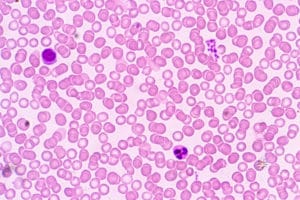Addressing Racial Disparities in Multiple Myeloma Clinical Trials and Outcomes During the Pandemic
The word myeloma stems from the Greek word “myelos,” for marrow. Indeed, this type of blood cancer begins in the plasma cells, a type of white blood cell that develops in the bone marrow. While healthy plasma cells make antibodies that can help to fight infections and disease, cancerous plasma cells make abnormal antibodies. As the cancerous plasma cells proliferate, these abnormal antibodies accumulate in the bone marrow, which can interfere with the production of healthy blood cells. Myeloma cells can develop in different bones throughout the body. This cancer is often diagnosed when myeloma is present at multiple sites, when it is called multiple myeloma.

In 2020, roughly 32,000 cases of myeloma were diagnosed, representing nearly 2 percent of all cancer diagnoses last year. The five-year relative survival for the disease is just over 50 percent, and diagnoses of myeloma have been slowly increasing in recent decades. Less than 5 percent of myelomas are diagnosed at the local stage.
Age is a key risk factor for multiple myeloma, as more than 60 percent of cases are diagnosed in those over 65 years. Race, too, is a risk factor for the disease—an analysis published in the journal Blood found that Blacks had more than twice the incidence of multiple myeloma compared with whites. Despite this increased incidence, both Black and elderly patients are underrepresented in clinical trials evaluating new treatments for multiple myeloma.
Last year, the AACR collaborated with the U.S. Food and Drug Administration (FDA) to conduct the Workshop to Examine Under-representation of African Americans in Multiple Myeloma Clinical Trials, which was previously detailed in this blog post. Recommendations from this workshop were recently published in the journal Blood Cancer Discovery, a journal of the AACR. The paper outlines guidance about clinical trial enrollment (both in the preapproval and postapproval stages). These recommendations include broadening eligibility criteria, completing a diversity study plan, appointing a diversity officer, finding ways to increase diversity, and incentivizing inclusiveness. The workshop also addressed ways to best incorporate real-world data studies.
March is Multiple Myeloma Awareness Month, and Blood Cancer Discovery has compiled a collection of myeloma articles that have been published in the journal. One of these articles was recently discussed at an AACR Virtual Journal Club, which was moderated by the deputy editor of Blood Cancer Discovery. This article, and a related commentary, focused on multiple myeloma outcomes during the COVID-19 pandemic. The full discussion can be viewed here.
To report on the latest research in this area and help to foster scientific collaboration, the AACR is holding its first ever conference focused on myeloma next month. This virtual meeting, Myeloma: Discovery to Therapy, will feature sessions on topics spanning from myeloma precursor conditions to treatment resistance. Registration for this meeting is open now.
To learn more about experiences with multiple myeloma and potential treatment options for this disease, read this article published in Cancer Today magazine.



